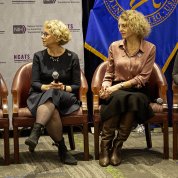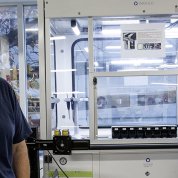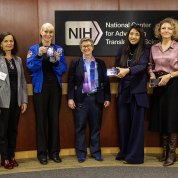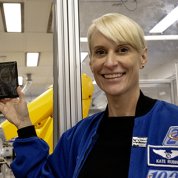Space and Swiss Army Tools
Astronaut Rubins Visits NIH

Photo: Megan Schartner
Dr. Kate Rubins didn’t initially intend to be an astronaut when she applied to NASA in a moment of grant-writing procrastination. And yet, a year later, she found herself part of NASA’s 20th astronaut class. The microbiologist-turned-astronaut became the first person to sequence DNA in space, among many other interstellar scientific achievements.
Rubins recently visited NIH for a series of meetings and events with the National Human Genome Research Institute (NHGRI) and the National Center for Advancing Translational Sciences (NCATS). One featured event was the NCATS Women in Science leadership panel, which featured Rubins in conversation with women leaders from across NIH. Members of the Women in Science Diplomacy Association also participated.
Rubins knew she wanted to be involved in the sciences from a young age, she told NCATS Director Dr. Joni Rutter in a fireside chat. One formative experience came when Rubins was a teenager and attended a scientific conference with her father.
“I understood maybe 10 percent of it,” she joked, “but what I did understand was that I was going to work with DNA for the rest of my life.”

Photo: Megan Schartner
Rubins conducted undergraduate research on HIV integration, or the mechanism by which the virus incorporates its genome into a host cell’s DNA. She earned her Ph.D. from Stanford University and developed the first model of smallpox infection in concert with the U.S. Army Medical Research Institute of Infectious Diseases and the Centers for Disease Control and Prevention.
Post graduation, Rubins worked as a principal investigator in a lab studying viral diseases, with a focus on poxvirus and host-pathogen interaction. These diseases primarily affect Central and West Africa, and so she traveled to the Democratic Republic of Congo to conduct research and supervise study sites.
Unbeknownst to her at the time, her research in Africa prepared her for the conditions she would face in the International Space Station (ISS). Both locations, Rubins said, had “limited power and resources, and there was no guaranteed research infrastructure.”
Rubins emphasized the importance of designing tools that can be used in a variety of environments. “We [often] don’t take into account resource-poor areas when we design medical and research equipment,” she said.

Photo: Megan Schartner
Her lab in the ISS came with its own set of challenges. Microgravity, the sensation of weightlessness caused by a negligible amount of gravity, does more than just allow astronauts to float. A collaboration between NASA and NCATS has permitted researchers on the ISS (like Rubins) to study the effects of microgravity on the human body.
“The human body adapts quickly to microgravity and then maladapts when it returns back to [Earth],” Rubins explained. Astronauts may experience unwanted side effects such as lightheadedness.
NASA’s partnership with NCATS has produced the Tissue Chips in Space initiative. Tissue chips replicate human organs using organ-specific cells mounted on small devices. In her time at the ISS, Rubins studied the effects of microgravity on tissue chips containing heart cells. These cells even have heartbeats, making them an interesting attraction for the other astronauts aboard the ISS, she recalled.
Rubins’ visit also prompted discussions about how women can succeed in science careers and beyond. One important element, panelists agreed, was to build upon infrastructure that allows women to climb faster and higher than their predecessors.

Photo: Megan Schartner
Rutter imagined a Swiss army tool capable of breaking the glass ceiling, with attachments such as: a flashlight to show off early-career employees’ accomplishments; a chisel to widen the cracks made by the people who came before; a hammer and nails to represent training to negotiate for yourself; and a signal booster tool to amplify your impact.
However, the panelists emphasized that women should not sacrifice their well-being when striving for success. Dr. Diana Bianchi, director of the Eunice Kennedy Shriver National Institute of Child Health and Human Development (NICHD), said a benefit of her position is her ability to set new policies. NICHD has a no-email policy over the weekends, and they also set aside four weeks throughout the year where no meetings are scheduled, to give employees time to recharge and catch up on work.
It may be easy to normalize overwork, said National Cancer Institute Director Dr. Kimryn Rathmell, but “You have to take care of yourself in order to do your work well.”
In the final panel, participants discussed the next horizon for girls and young women in science, technology, engineering and math (STEM). Rubins offered an example of how increasing inclusivity would be helpful; at NASA, there still are no spacesuits designed to fit people with traditional female proportions.
Dr. Jeanne Marrazzo, director of the National Institute of Allergy and Infectious Diseases, and Dr. Giusi Condorelli, the Embassy of Italy’s science attaché for health, both agreed that new policies or incentives may be needed to encourage current leaders to make room for women at the top.
“Break out your Swiss army tools and get to work,” Rutter encouraged the audience.
A recording of the event can be viewed here: go.nih.gov/5iX3ASu.
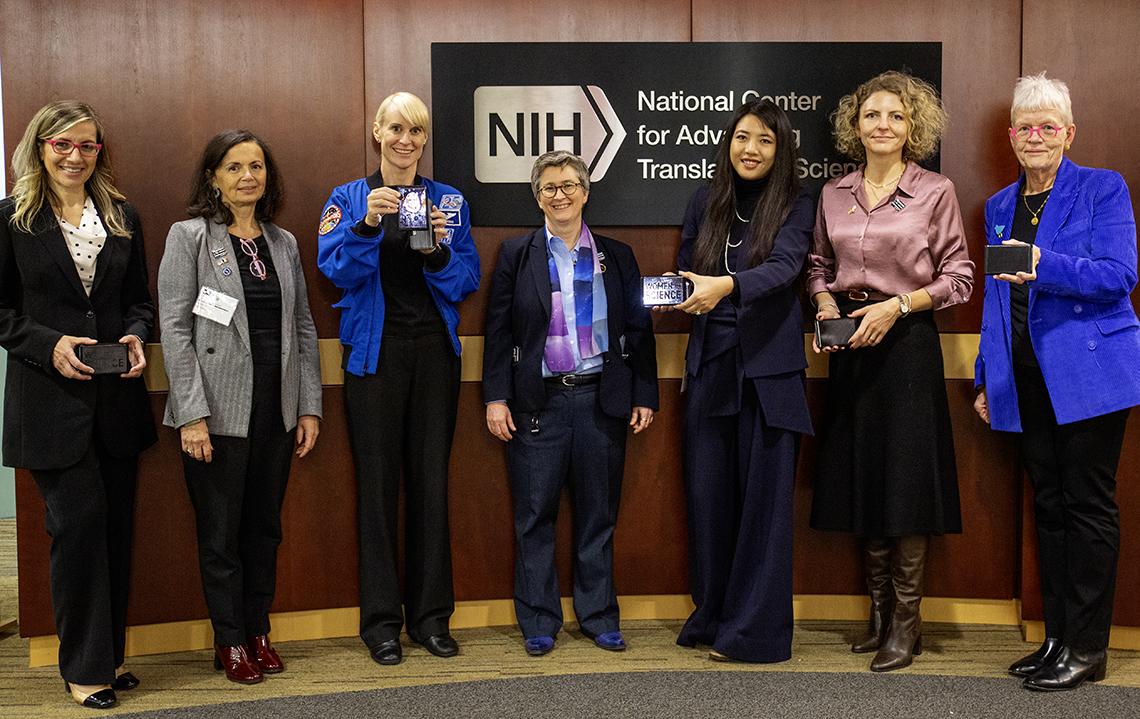
Photo: Megan Schartner


